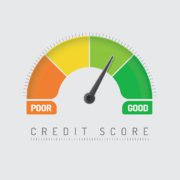What to Do Before You Make an Offer on a House
Before taking the plunge into homeownership, it’s essential to have a comprehensive checklist in hand that ensures informed decisions throughout the process.
This checklist will help you navigate the complexities of buying a house and ensure that you consider all the important factors before making an offer.
Don’t Rush Into a Decision: Take ample time to explore all of your options, from evaluating local real estate trends to learning about property taxes and insurance costs associated with owning the house.
Hire Professionals: Hiring qualified professionals, such as real estate attorneys, mortgage lenders, or inspectors, is essential to avoid potential pitfalls later down the line.
Don’t Overspend: Make sure that the final agreed-upon price aligns within the limits defined by your mortgage preapproval. The excitement of buying a home often leads buyers to overextend themselves financially.
Your Ultimate Checklist for Making an Offer on a House
Invest ample time, seek expert advice, and thoroughly assess each aspect. With meticulous planning, you’ll be one step closer to finding your ideal home. This checklist will walk you through the necessary details to make a well-informed and advantageous decision before making an offer on your home.
Get Pre-Approved Before Making an Offer
Getting pre-approved for a mortgage should be the first step in your homebuying process. A pre-approval letter from your lender will give you the upper hand when negotiating with sellers. Plus, it saves you from the heartbreak of falling in love with a house you can’t afford. You’ll need to approach reliable mortgage lenders, providing them with necessary financial documents such as proof of income, credit history, and assets.
Consult with a mortgage lender for estimates on making monthly mortgage payments, considering interest rates and the down payment amount—factor in costs like homeowner’s association fees (if applicable), property taxes, and home insurance.
Evaluate the Current Real Estate Market
What are the current market conditions? Are homes selling above or below the asking price? How long do these properties linger on the market?
Evaluate real estate trends, including home prices, average time on the market, and selling prices compared to list prices. An experienced real estate agent familiar with your desired location can help you navigate the homebuying process. Choose a licensed agent who knows the area well.
Researching Your Desired Neighborhood
Location is a crucial factor when buying a home. Before you commit to buying your ideal residence, be sure to research the surrounding area and neighborhood. Don’t get stuck in a place where the only food source is an unreliable convenience store, or the closest school district is miles away.
Before making an offer, it’s essential to get a sense of the background of your potential home. This can be achieved by checking tax records, property appraisers’ records, or court documents.
A key part of due diligence is learning about the house’s history as much as possible. When was it built? When did the current owner buy it? What renovations were done over time? Similarly, consider future plans, too, such as proposed developments nearby, which may influence the property value significantly over time.
At Michigan Mortgage, we offer a swift and simplified pre-approval process. And when it comes to finding a qualified Realtor, our team of experts is here to assist you. We can connect you with vetted Realtors who will provide guidance throughout the entire homebuying process.











 For potential homebuyers, LLPAs can have a significant impact on the affordability of a mortgage. If a borrower has a lower credit score or a smaller down payment, they may be subject to higher LLPAs, which can increase their interest rate and therefore their monthly mortgage payment. Conversely, borrowers with higher credit scores & larger down payments may be able to qualify for lower LLPAs, which can result in a lower interest rate and monthly mortgage payment.
For potential homebuyers, LLPAs can have a significant impact on the affordability of a mortgage. If a borrower has a lower credit score or a smaller down payment, they may be subject to higher LLPAs, which can increase their interest rate and therefore their monthly mortgage payment. Conversely, borrowers with higher credit scores & larger down payments may be able to qualify for lower LLPAs, which can result in a lower interest rate and monthly mortgage payment.